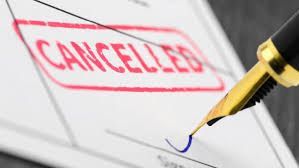YOUR TRUSTED
REAL ESTATE RESOURCE
We curate education on the latest and most common real estate topics for the buyers, sellers and real estate agents driving today’s millennial market.
EXPLORE the most recent
articles & vlogs

By Paul Centopani June 26, 2025 By: Ralph Dibugnara June 30, 2025 Mortgage rate forecast for next week (June 30-July 4) https://themortgagereports.com/32667/mortgage-rates-forecast-fha-va-usda-conventional Mortgage rates decreased for the fourth consecutive week. The average 30-year fixed rate mortgage (FRM) declined to 6.77% on June 26 from 6.81% on June 18, according to Freddie Mac. It marks 23 straight weeks below 7% for the average 30-year FRM. Mortgage rates in 2025 have been experiencing a subtle but important shift. After climbing sharply in 2023 due to aggressive Federal Reserve rate hikes aimed at taming inflation, rates have now started to show signs of stabilizing and even easing slightly. As of late June 2025, the average 30-year fixed mortgage rate stood at about 6.77%, marking four straight weeks of decline and maintaining a level below 7% for over five months. This sustained period below 7% is significant given that mortgage rates had surged well above that in previous years. Why is this happening? The Federal Reserve is walking a tightrope: Inflation has cooled down somewhat, but the Fed is cautious because tariffs and geopolitical events (like tensions in the Middle East) could push inflation back up. The Fed’s officials, including Chairman Jerome Powell, have been in a “wait and see” mode—hesitant to cut rates until there’s clearer evidence tariffs aren’t causing inflationary pressures. The labor market has shown mixed signals, with some revisions suggesting it’s not as strong as initially thought, which could eventually pressure the Fed to ease rates to stimulate the economy. The global economy also faces uncertainty from trade tensions and geopolitical conflicts, which traditionally tend to lower interest rates as investors seek safer assets. What about July 2025? Experts overwhelmingly predict mortgage rates will mostly moderate rather than dramatically rise or fall during July. The mix of cautious Fed policy, persistent inflation concerns, and geopolitical risk means rates will likely stay in a narrow band. Ralph DiBugnara’s Perspective: Ralph DiBugnara, founder at Home Qualified, describes the market as “a predicament going into July,” highlighting several important points: Signs Point to Potential Rate Cuts: Historically, threats of war or geopolitical instability tend to push mortgage rates lower because investors flock to safe assets like Treasury bonds, which pulls down yields and consequently mortgage rates. Fed’s Pause on Rate Cuts: However, the Fed remains cautious and has paused rate cuts, largely because it is uncertain about the inflationary impact of tariffs and is monitoring economic data before making moves. Closer to Lower Rates Compared to Earlier: DiBugnara believes we are closer to seeing lower mortgage rates now than at the start of the year, suggesting a gradual easing environment ahead, rather than sudden shifts. Specific Rate Predictions: He forecasts the average 30-year fixed mortgage rate in July to be around 6.875%, with the 15-year fixed rate at about 6.375%. These levels suggest a slight improvement over the high rates seen previously but still reflect a relatively high-rate environment compared to the ultra-low rates seen in 2020-2021. Additional Expert Views & Trends Other economists and mortgage experts echo a similar outlook of rates remaining mostly flat or slightly declining, with the possibility of “rollercoaster” ups and downs due to tariff expirations, Fed meetings, and economic data releases. Most forecasts from major housing authorities put Q3 2025 rates in the 6.4% to 6.8% range, confirming a mild but steady downward trend. The “new normal” mortgage rate is considered to be around 7%, according to some experts, with the ultra-low rates of the pandemic era seen as exceptional outliers. What Should Borrowers Do? Shop Around: Rates can vary widely between lenders based on credit score, down payment, and financial health. Be Prepared: Mortgage market volatility means borrowers should get pre-approved and act quickly if they find a good deal. Manage Expectations: Rates may not drop drastically soon but are expected to gradually improve throughout the year. Understand Loan Types: Different loan programs (VA, FHA, USDA, jumbo) offer varied rates and benefits depending on the borrower’s profile. How to shop for interest rates Rate shopping doesn’t just mean looking at the lowest rates advertised online because those aren’t available to everyone. Typically, those are offered to borrowers with great credit who can put a down payment of 20% or more. The rate lenders actually offer depends on: • Your credit score and credit history • Your personal finances • Your down payment (if buying a home) • Your home equity (if refinancing) • Your loan-to-value ratio (LTV) • Your debt-to-income ratio (DTI) To figure out what rate a lender can offer you based on those factors, you have to fill out a loan application. Lenders will check your credit and verify your income and debts, then give you a ‘real’ rate quote based on your financial situation. You should get three to five of these quotes at a minimum, then compare them to find the best offer. Look for the lowest rate, but also pay attention to your annual percentage rate (APR), estimated closing costs, and ‘discount points’ — extra fees charged upfront to lower your rate. Summary Takeaway Mortgage rates in July 2025 are expected to moderate, possibly edge down slightly, but will remain historically elevated compared to pandemic lows. The Federal Reserve’s cautious stance, ongoing inflation concerns, and geopolitical risks are keeping rates relatively stable, with the potential for modest declines if economic conditions allow. Ralph's insight encapsulates the uncertainty and cautious optimism: rates might soften soon, but for now, it’s a “wait and see” environment with moderate levels around 6.875% for 30-year fixed mortgages.

By: Ralph Dibugnara June 5, 2025 As the real estate market continues to shift in 2025, one trend stands out: the sharp decline in the purchase of vacation homes. According to a recent analysis shared in a YouTube video, the number of mortgages taken out on second homes has reached its lowest point in 20 years. This downturn in activity presents a potential goldmine for buyers who know where to look. Why the Drop in Vacation Home Purchases Matters Over the past year, fewer people have been investing in second homes—often used as vacation or short-term rental properties. Rising interest rates, economic caution, and declining returns from platforms like Airbnb have made many prospective buyers hesitant. As a result, inventory in these areas is building up. This slowdown could lead to a surplus of properties on the market, especially in popular tourist destinations that previously saw high demand from investors. In turn, this increased inventory may drive prices down and create unique opportunities for strategic buyers. The Airbnb Effect: Inventory on the Horizon Short-term rental markets, especially those reliant on Airbnb income, are now seeing a pullback. As fewer buyers take on new mortgages and many owners reconsider the profitability of managing vacation rentals, more homes are likely to be listed for sale in the next 12 to 24 months. This means we could soon see a wave of former short-term rentals hit the market. For buyers, this anticipated supply boost represents a rare opportunity—especially if prices remain suppressed due to low competition. A Buyer’s Market for the Right Type of Property Even though some investors may be cautious about re-entering the Airbnb business, the speaker in the video notes that these properties still hold value—particularly for owner-occupants. If you're looking to purchase a home in a desirable area and live in it, now could be the perfect time to get in before demand rebounds. In other words, this isn’t just a play for rental investors. People looking for a second home, a relocation opportunity, or even a primary residence in a scenic area can benefit from today's soft market conditions. Looking Ahead The decline in vacation home buying isn't just a statistic—it's a signal. With fewer buyers, growing inventory, and reduced competition, 2025 may offer some of the best buying conditions in years for certain segments of the real estate market. Whether you're an investor waiting for the right moment or a future homeowner eyeing a dream location, keeping an eye on the short-term rental market could lead you to your next big opportunity. For a visual overview and additional insights, you can watch the full video here: https://youtube.com/shorts/riNsRqLCkVQ?si=En3MKSlTJgqLfB1b

By: Ralph Dibugnara June 2, 2025 You’ve probably heard the advice everywhere: “Buy real estate!” But Warren Buffett, one of the world’s greatest investors, famously says he prefers stocks over real estate. So, why the difference? Let’s break down the perspectives. Real Estate’s Strong Historical Track Record The video points out that over the last 83 years, real estate has appreciated in value for 77 years — an impressive record. The only years it declined were during major market crashes, making it a relatively safe investment for the average person. Real estate’s consistent growth comes from fundamental factors like: Limited housing supply Increasing demand due to population growth Its status as a tangible asset For most people looking for a solid, understandable way to grow wealth, real estate ticks many boxes. Warren Buffett’s Unique Position and Preference Warren Buffett’s investing journey is unique. He built his fortune in a time when stock investing had less competition and inefficiency that he could exploit. Today, he has access to sophisticated financial tools and inside knowledge, enabling him to make complex, high-level stock investments. For Buffett: Stocks offer greater liquidity They provide ease of diversification He can make more sophisticated investment choices These advantages make stocks a better fit for his style and resources. What This Means for Most Investors If you’re an everyday investor: Real estate is still one of the best “simple” investments for building wealth. It provides steady growth, tangible value, and potential rental income. The housing shortage and demand trends support continued appreciation. Buffett’s advice is shaped by his unique skills and resources, but for most people, real estate remains a solid, long-term investment choice. Conclusion Warren Buffett’s preference for stocks doesn’t mean real estate is a bad investment. Rather, it highlights that different investments work better for different investors depending on their knowledge, capital, and goals. For many people seeking a straightforward, historically reliable investment, real estate remains a powerful way to grow and protect wealth.

By: Ralph Dibugnara By Yaёl Bizouati-Kennedy May 8, 2025 https://www.realtor.com/advice/finance/what-is-an-acceleration-clause/ t’s no secret that the double whammy of inflation and high interest rates continues to hurt Americans’ finances. Further compounding the issue, an Insurify survey found that “homeowners will again face rising insurance costs in 2025 as insurance companies try to recoup massive losses from recent years.” The insurance comparison shopping website projects the annual cost of home insurance will increase 8% by the end of the year, to a national average of $3,520.” In turn, these combined high costs can result in missed mortgage payments. In fact, as of Feb. 28, 2025, the total U.S. loan delinquency rate stood at 3.53%, representing a 5.69% year-over-year change, according to Intercontinental Exchange data. While missing one mortgage payment might not seem catastrophic, homeowners should be cautious about one specific clause in their contract: the mortgage acceleration clause. What is a mortgage acceleration clause? A mortgage acceleration clause is a provision in the mortgage contract that stipulates the lender may “accelerate” payments under certain circumstances. It's part of the standard mortgage agreement used by Fannie Mae. But even if your mortgage is not backed by Fannie Mae, most lenders have some form of an acceleration clause in place. “If a homeowner fails to fulfill the terms of their mortgage agreement, they’ll receive an acceleration letter notifying them that the lender has triggered the acceleration clause,” according to Rocket Mortgage. "If any terms of the loan agreement are not met, the mortgage note holder has the right to call the note," adds Ralph DiBugnara, a vice president at Residential Home Funding. What can trigger an acceleration clause in real estate? Various situations can initiate the implementation of this clause, and understanding your contract and its terms is crucial. Missing payments When homeowners miss a mortgage payment, lenders can use this clause. “The number of payments that can be missed before a lender demands repayment can vary based on several factors, such as the loan documents, laws and regulations, investor guidelines, and lender policies,” according to Chase Bank. Lack of insurance Another instance that can trigger this clause to be implemented is if you cancel your homeowners insurance for whatever reason. As Rocket Mortgage explains, “your lender will require you to maintain homeowners insurance so that the property can be repaired if it’s damaged to restore its market value.” Unpaid property taxes The clause can be implemented if you fail to pay your property taxes, and this could result in a lien against your home, according to Quicken Loans. To put this in context, a recent survey from real estate resources website Ownwell found that 74% of respondents worry about significant increases in their annual property tax bills. Bankruptcy and unauthorized property transfer An acceleration clause can also be enacted by your lender in the instance of a bankruptcy, as well as in the case of an unauthorized and unapproved property transfer. What can you do if your mortgage is accelerated? If you receive a mortgage acceleration clause letter, there are a few steps you can take. "It's important to note that even if your mortgage is accelerated, you can still avoid foreclosure," explains Adam Sherwin of the Sherwin Law Firm, in Somerville, MA. "It doesn't mean that there's no other option left." Case in point: The legal foreclosure process "can’t start until you are at least 120 days behind on your mortgage,” according to the Consumer Financial Protection Bureau. A lender doesn't have to accelerate your loan to foreclose on your home, explains Sherwin, but often it will. "It's kind of a formality," Sherwin explains. "It's one last chance to pay before the foreclosure process begins." Mortgage acceleration repayment plan One option is mortgage acceleration repayment plans. Quicken Loans explains that this enables owners to pay missed payments, and once they’re caught up, regular mortgage payments will be reinstated. “Some lenders are flexible and may even make a repayment plan available so you can catch up on defaulted payments without a large lump sum payment,” according to Quicken Loans. Refinancing Refinancing loans might also be an option, but this is not available to everyone, especially if the acceleration clause is implemented due to missed payments, as these “have a significant impact on your ability to qualify,” according to Rocket Mortgage. Short sale This means that the home will be sold for “less than the balance remaining on the mortgage,” and the proceeds of the sale will go toward the loan, according to Chase Bank. Finally, there are also some preemptive steps you can take if you believe you will miss a mortgage payment. For instance, homeowners can ask for mortgage assistance. Some lenders will help you if you experience a hardship due to an unexpected life event such as job loss, illness, or a natural disaster. "Each servicer has their own specific guidelines for modification," says Sherwin, but they may extend your loan's terms, reduce your interest rate, or come up with a delayed repayment schedule that works for both parties. Updated from an earlier version by Audrey Ference.

By: Ralph Dibugnara May 19, 2025 In the face of ongoing discussions about a housing crisis and fluctuating market conditions, a recent YouTube Short titled “The TRUTH You NEED to Know!” offers clear, no-nonsense insights about the realities of the current real estate landscape... especially in New Jersey and the broader Northeast. The Reality Behind the Housing Market Headlines Contrary to popular belief fueled by national headlines suggesting widespread housing market declines, this video stresses that not all real estate markets are created equal. In particular, the Northeast, including New Jersey, continues to experience strong home prices and sustained demand, defying trends seen in other parts of the country. The video highlights how New Jersey’s market remains competitive and stable due to: Limited housing supply Consistently high demand fueled by proximity to major cities Reluctance of sellers to lower prices despite economic pressures One Size Doesn’t Fit All: Understanding Regional Market Differences Across the U.S., headlines often point to declining home prices and softening demand. However, these generalizations can be misleading—particularly in the Northeast. Markets like New Jersey remain resilient, with prices staying firm or even climbing in certain areas due to sustained demand, limited inventory, and proximity to major metropolitan hubs like New York City and Philadelphia. It’s essential to understand that: Real estate is local: National trends don’t always apply. The Northeast behaves differently: Unlike the Sunbelt or parts of the Midwest, the Northeast has a scarcity of developable land, strong job markets, and institutional demand that support home values. Prices aren’t dropping everywhere: In fact, many towns across New Jersey are experiencing stable or rising prices despite higher interest rates. Strategies Highlighted in the Video The video emphasizes several actionable strategies tailored to navigating tough conditions in a high-cost, competitive market like New Jersey: Partner with Local Agents: Agents with deep knowledge of specific neighborhoods can give buyers an edge with early listings, hyper-local insight, and access to off-market deals. Consider Foreclosures and Auctions: In some municipalities, distressed properties still exist. These can offer value if buyers are prepared to handle renovations and legal complexity. Direct Outreach Works: Contacting owners directly—especially absentee landlords or those in pre-foreclosure—can reveal buying opportunities before the public sees them. Track Micro-Trends: Instead of relying on broad market averages, buyers should study individual towns, school districts, and even street-by-street trends to spot undervalued properties. Guidance for First-Time Homebuyers: Don’t Rely Solely on Zillow First-time buyers often begin (and sometimes end) their home search on platforms like Zillow or Redfin. While these tools can be helpful for browsing, they don’t capture the full picture. Why this is risky in markets like New Jersey: Zillow data often lags behind the market by days or weeks. “Zestimates” can be inaccurate in older neighborhoods or areas with diverse housing stock. Off-market opportunities never make it to online platforms. Listings may appear active when they’re already under contract. Better approaches include: Working closely with a buyer’s agent. Attending local open houses and town planning meetings. Studying township websites and property tax records. Joining local Facebook groups or neighborhood forums for early leads. Conclusion New Jersey isn’t a “declining” market—and it shouldn't be approached as such. Whether you’re a seasoned investor or a first-time homebuyer, success in this region requires hyper-local knowledge, strategic partnerships, and a willingness to go beyond surface-level advice. Don’t rely solely on national headlines or generic Zillow articles. Learn the local terrain, think long-term, and approach each deal with diligence and creativity. For a visual overview and additional insights, you can watch the full video here: https://youtube.com/shorts/n75P1fDUVTQ?si=mXGoFScchLKdz8i-

By: Ralph Dibugnara May 22, 2025 By: David McMillin 11/24/25 https://www.bankrate.com/mortgages/tips-for-first-time-home-buyers/?mf_ct_campaign=tribune-synd-feed&utm_content=syndication Key takeaways Before you start looking for homes, take time to evaluate your finances and improve your credit score. There’s a big difference between meeting the minimum credit score requirement and showing your lender a credit score well above 750. Remember to account for the variable expenses of owning a home, which include insurance, property taxes, maintenance and repairs. While sellers still have the edge in most parts of the country due to limited inventory, buyers are gaining more bargaining power. Work with an expert real estate agent to develop a negotiation strategy and score a better deal on your first home. If you’re still renting your place, the thought of buying a home can feel pretty overwhelming. A recent TD Bank survey of first-time homebuyers found that 64 percent of people who have never owned a home are concerned about affordability due to high mortgage rates. Despite those worries, nearly half are working to save up for a down payment. If you’re one of them, read on for some money-smart moves that can put you on the path to successfully buying a home. House hunting tips for first-time homebuyers 1. Check your credit (and work on it) The higher your credit score, the better the interest rate on your mortgage. Pull your reports Thoroughly understand where your credit stands by pulling a free copy of your report at AnnualCreditReport.com. It’s not a one-and-done free ticket, either; the site lets you pull your report every week without paying anything. It’s important to note that your credit report may look different depending on the credit bureau. There are three main credit reporting bureaus in the U.S.: Experian Equifax TransUnion It’s wise to look at all of your reports because you never know which report a lender will analyze. “Look for any errors or past-due accounts that might have gone to collections,” says Ralph DiBugnara, president of New York City-based Home Qualified, an online resource for homebuyers. “These liabilities can create roadblocks when you apply for a home loan. If anything is amiss, contact the creditor to see if you can sort it out.” Fix and then monitor your credit In addition to contacting a bureau if you spot any mistakes, follow these steps to keep your credit in the best shape possible: Pay down your credit card balances: Most lenders like to see a credit utilization ratio of 30 percent or less, according to Lindsey Shores, business development manager with SchoolsFirst Federal Credit Union. “For many people, this number is something they have to plan for and work to pay down to achieve,” she says. If you’re over that number, try to pay down your balances. Pay your bills on time: Follow this step whether you’re trying to buy a house or not — you can make or break your credit by making your payments on time every month. Take advantage of free credit monitoring tools: Many banks have free credit monitoring tools built into their mobile apps, giving you the ability to check your credit score easily and more frequently. “You’ll get notified if your credit score changes, or if there’s suspicious activity on your report,” says DiBugnara. 2. Nail down your budget When you’re building a budget to narrow your search for properties, don’t just think about how much house you can afford, but how much in recurring costs you can handle once you’ve purchased your home. Consider these key items: Principal and interest: This will be the bulk of your monthly payment, and if you take out a fixed-rate mortgage, this chunk will never change over the course of the loan. Homeowners insurance: How much you’ll pay to protect the property can vary widely. If you’re buying in an area with higher risks for flood, wildfire or other severe weather, you’ll need to be prepared for higher, ever-increasing premiums. Property taxes: Your property taxes will look different depending on the location, and, in most cases, will increase as your home’s value increases and/or your local government needs to raise them for their budget. HOA fees: If you’re looking at condos or homes in a homeowners association, ask how much you’ll pay each month in HOA fees. If you’re looking at buildings with a gym, pool and other amenities, these can get very steep. In addition to these expected expenses, it’s a good idea to put aside some money regularly for maintenance and unexpected repairs. “As a rule of thumb, I tell clients to prepare to spend 1 percent to 3 percent of the value of their homes each year on house [expenses],” says Steve Sivak, a certified financial planner and managing partner of Innovate Wealth. You might need to set aside more if the home you end up buying is older, bigger or has maintenance-heavy amenities, such as a pool. 3. Consider your needs and wants Finding the ideal location and address can take more time than you expect, so begin scouting neighborhoods early in the process. “Drive and walk around that area at different times of the day and night,” says Bill Golden, a Realtor and associate broker with Keller Williams Realty Intown. “This will help you get a feel for what you like and don’t like.” Along with pinpointing the neighborhood, now is a good time to narrow down your preferences for the home itself by considering these essential questions: What type of house are you looking for? What can you compromise on? What are the dealbreakers? Are you willing to look at older properties that may require some updates, or do you want a move-in-ready property? Think about what you like and dislike about where you currently live — that can help inform your list of needs and wants. 4. Get finances in place Regardless of income level, you should be able to document to potential lenders that you have a stable source of earnings. “Your income and how much you earn monthly will be scrutinized by lenders, who will look for a two-year employment history and want to see consistent income — whether you’re receiving a salary, hourly pay or are self-employed,” says Tom Hecker, a loan officer with Cherry Creek Mortgage. If you’re self-employed, be ready for closer scrutiny than someone getting a salary or hourly wage. In terms of your liquid funds and overall financial health, in addition to reviewing your credit report, mortgage lenders typically look at your bank statements from the last two months when assessing your application. If you plan to make any deposits into your checking or savings accounts from other assets — such as a down payment gift — do it before that 60-day window. This gives the funds time to “season.” And it’s best to avoid opening new credit accounts or loans, or racking up more debt, at this stage, DiBugnara adds. All those activities could possibly ding your credit report. Learn more: How to save for a down payment Tips for finding the right mortgage 5. Comparison shop mortgage lenders At this point, you should know what monthly payment you’re comfortable with, what areas you can afford and how much you can put down. Now it’s time to shop for a mortgage. Consider these factors: Comparison shop: Compare mortgage rates from at least three different types of lenders, as well as different types of mortgages. What others have to say: Read customer reviews for lenders online to get a sense of what the experience is like with individual lenders. Interactions with the lender: Even “in this market, you can find competitive rates and service, but you want to pay close attention to lenders’ responsiveness and communication,” says DiBugnara. The mortgage terms: It’s also a good idea to focus on not just the rates lenders quote you but also all the mortgage terms. What are the late fees? What are the estimated closing costs? Is there a prepayment penalty? If you’re able to get a mortgage with the bank where you already have accounts, will you get a better deal? Sometimes, it makes sense to choose a loan with a slightly higher rate if the other terms are more favorable overall. Learn more: Different types of mortgage lenders 6. Get preapproved Once you settle on a lender, get preapproved for a mortgage. This will require documentation of your income and finances, and organizing your paperwork in advance can help the process run smoothly. It will also prepare you for mortgage underwriting, which will require similar documentation. Unlike prequalification, which is a projected loan size you’ll be able to get, a preapproval is an official letter from a lender stating exactly how much it will loan to you. A preapproval will put you in a much stronger position when you’re making an offer on a house, and it will ease the process once your offer has been accepted and you’re actually applying for your loan. Preapprovals usually expire after 90 days, says DiBugnara, so ask your lender how long yours will be good for. If you’re a first-time homebuyer with significant debt or so-so credit, you might want to apply for a preapproval as soon as possible to identify issues to fix. “Once you have a preapproval in place, keep sticking to your budget and savings plan and continue to pay all debts on time,” says Hecker. “Try not to make any extraordinary purchases or take on extra debt, either.” 7. Look for down payment assistance There are many first-time homebuyer and down payment assistance programs, including at the local, regional and national level, that can help cover your down payment or closing costs. These aren’t for everyone, though. To score some down payment assistance, be prepared for these eligibility requirements: Earn less than a specific amount per year, which typically varies by location and household size Purchase a home that does not exceed a maximum amount, which can vary based on targeted and non-targeted areas Take out a loan offered in conjunction with the state housing authority These programs are typically limited to borrowers with an income below a certain level (based on location), and can impose a cap on the home’s price, too. Keep in mind that many of these programs have terms that stipulate you must live in the home for a certain period of time to qualify for forgiving the loan and/or avoiding a recapture tax penalty that can come into play if you sell the property earlier than expected and earn a profit. Often, your loan officer can provide info on the available programs and what you might be able to pair with your mortgage. Tips for buying your first home 8. Work with a real estate agent After you have your financing squared away and a preapproval letter in hand, your next step as a first-time homebuyer is to hire a real estate agent or Realtor. An experienced real estate agent who knows the area you’re looking to buy in especially well can advise you on market conditions and whether homes you want to make offers on are priced properly. Your agent can also identify potential issues with a home or neighborhood you’re unaware of, and go to bat for you to negotiate pricing and terms. You can start by asking friends, relatives or co-workers for referrals. Interview several prospective agents to get a feel for who may be a solid match in terms of personality and expertise. “Don’t just pick [an agent] blindly — make sure it’s someone who works in the general area you’re looking in and whom you feel comfortable with,” says Golden. Offerings “come up every day, and a good Realtor will be on top of that and get you to see new listings as soon as they become available.” 9. Negotiate with the seller Even when you see the home of your dreams, don’t be afraid to negotiate the price with sellers. While it’s difficult in red-hot real estate markets, some areas of the country are beginning to see more homes sell for less than the asking price. As you work to get a good deal, consider these bargaining tactics: Use comps to justify a lower offer. A low offer can offend a seller, so work with your agent to look at comps that justify why a seller should consider your terms. Did a nearby property with an additional parking spot recently sell for the same amount? Are there other similar homes with nicer amenities listed for less? Back up your bargaining with evidence from the rest of the market. Ask for concessions based on the home inspection report. Is some of the electrical wiring incorrect? Does the furnace seem like it’s nearing the end of its lifespan? Are the windows going to need to be replaced soon? If your home inspector uncovers some minor issues with the home, don’t be afraid to ask for concessions that will require the seller to cover a chunk of your closing costs. And if the inspector uncovers some major issues, be aggressive in your negotiations — and don’t be afraid to walk away from the deal altogether. Request a different closing timeline. Negotiating your home purchase isn’t just about money; it’s also about time. Depending on your needs, you can ask the seller for a closing date that gives you more or less time to get the deal done. For example, if you really want to avoid paying another month of rent, don’t be afraid to request that the seller be prepared to move out earlier. 10. Draw up a contract When you find a home and prepare to make an offer, work with a real estate attorney to spell out any conditions or situations that will allow you to walk away from the deal. These are known as contingencies, and they often include: Major issues with a home inspection Mortgage application denial A lower appraisal than the offer price If these terms are spelled out in writing with deadlines, you’ll have an out if the transaction doesn’t go as planned — and get your earnest money deposit back, too. Bottom line For a first-timer, buying a home can feel overwhelming and endless. But breaking down the process into steps and tackling them one at a time can help you stay focused and get the job done. Doing your research in advance and working with a trusted real estate agent can help you stay on track throughout the process. Keeping your finances steady and limiting other big-ticket purchases can also help you qualify for a loan and get into your first home.
HOME QUALIFIED HAS BEEN FEATURED ON
let us connect you to
investors in real estate
Looking to build a home, buy a fixer upper
& repair or invest in a real estate project long term?
We can connect you to experts who have loan products.

get hq’s hottest insider tips & news articles delivered direct to you







